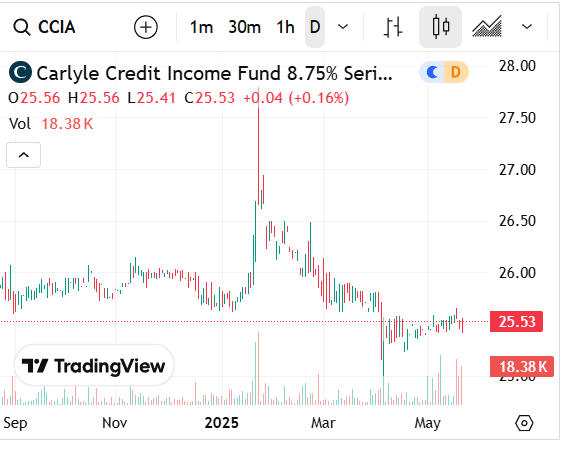The inability of congress to make any real progress whatsoever on the budget deficit – or even anything that gives one hope that they may move in the right direction is stopping me from buying perpetual (or long dated bonds). I own a limited number of perpetual shares already–mostly ones I have held for a long time and have a level of comfort with holding irrespective of the interest rate risk that thye have in them.
I have noticed that the prices on my list of potential buys that have lots of potential for capital gains – keep getting cheaper–obviously investors have little faith in interest rates moving lower.
I am intrigued with the Affiliated Managers baby bonds–the 5.875% issue (MGR) and the 4.75% baby bonds (MGRB) are both trading with current yields of over 7.2%. I have a little of the MGR issue as I sold the majority of my shares at $24.92 in October, 2024 and now it is trading at $20.29. The MGRB issue is trading at $16.39. These are investment grade.
The Brookfield Infrastructure 5% BIPH issue is trading down at $15.99 for a current yield of 7.75%. This is an investment grade issue also.
If we had even an inkling of progress on the budget deficit front I would love to have a truckload of these issues–but we don’t have that inkling of progress–at least that I see. I will be waiting, but these are wonderful issues for those looking for investment grade income.

